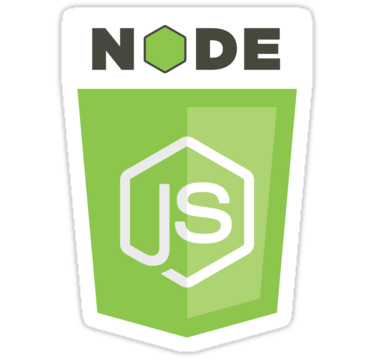Getting Started with Hazelcast and Node.js
Written by Viktor Gamov -

|
TL;DR
Install the package npm install hazelcast-client, grab a demo app and read API docs.
Time To «Hello World!» less than 5 min.
|
Intro
On the behalf of Hazelcast Team, I’m pleased to announce the availability of version 0.2 of the Hazelcast Client for Node.js.
The new version includes following features:
-
IMapNode.js client supports following operations of
IMap-get,put,remove. -
Smart Client
A client connects to each cluster node. Since each data partition uses the well known and consistent hashing algorithm, each client can send an operation to the relevant cluster node. This increases the overall throughput and efficiency. Plus, you don’t need to restart the client when adding or removing nodes from the cluster.
-
Distributed Object Listener
Enables the notification regarding the creation and deletion of a distributed object (like
IMap) on the cluster.
Hazelcast Client for Node.js is available from NPM. API documentation available on Github.
Let’s Write Your First Node.js App with Hazelcast
Before you start
-
You need to download Hazelcast from official website and unpack it to any folder.
-
Start Hazelcast cluster using startup scripts
Install The Hazelcast Client Package from NPM
If you have Node Package Manager (npm) installed, you will be able to install the Hazelcast Node.js client just by running this from the command line.
npm install hazelcast-clientYour First Hazelcast App
For this introduction, we are going to be creating a simple console application by opening a text editor and creating a JavaScript file. To begin, we need to connect to our cluster and retrieve the «persons» map.
var HazelcastClient = require('hazelcast-client').Client; (1)
var Config = require('hazelcast-client').Config; (2)
var config = new Config.ClientConfig();
config.networkConfig.addresses = [{host: '127.0.0.1', port: '5701'}]; (3)
var map = {};
HazelcastClient
.newHazelcastClient(config) (4)
.then(function (hazelcastClient) { (5)
map = hazelcastClient.getMap("persons");
// do stuff with map
});| 1 | Importing Client class. |
| 2 | Importing Config class. |
| 3 | Providing an address of local Hazelcast cluster. |
| 4 | There is another method Hazelcast.newHazelcastClient() that doesn’t take parameters.
It uses the default config with local addresses. |
| 5 | A function newHazelcastClient returns a promise. A promise is an object that represents the return value or the thrown exception that the function may eventually provide. |
Now that you are connected to the cluster and have retrieved personMap, let’s insert a John Doe object into the "persons" map.
var insertPerson = function (map) {
var person = { (1)
firstName: "John",
lastName: "Doe",
age: 42
};
map.put(1, person).then(function (previousValue) { (2)
console.log("Previous value: " + JSON.stringify(previousValue));
});
};| 1 | This is the person object that will be inserted into Hazelcast IMap |
| 2 | A put operation returns a promise of previous value for a given key. |
Similarly, you can read and delete the object from IMap.
var readPerson = function (map) {
map.get(1).then(function (value) {
// do object stuff here
})
};
var deletePerson = function (map) {
map.remove(1).then(function (value) {
// do object stuff here
})
};var HazelcastClient = require('hazelcast-client').Client;
var Config = require('hazelcast-client').Config;
var config = new Config.ClientConfig();
config.networkConfig.addresses = [{host: '127.0.0.1', port: '5701'}];
var map = {};
HazelcastClient
.newHazelcastClient(config)
.then(function (hazelcastClient) {
map = hazelcastClient.getMap("persons");
insertPerson(map);
readPerson(map);
deletePerson(map);
});
var printValue = function (text, value) {
console.log(text + JSON.stringify(value));
};
var insertPerson = function (map) {
var person = {
firstName: "Joe",
lastName: "Doe",
age: 42
};
map.put(1, person).then(function (previousValue) {
printValue("Previous value: ", previousValue);
});
};
var readPerson = function (map) {
map.get(1).then(function (value) {
printValue("Value for key=1: ", value);
})
};
var deletePerson = function (map) {
map.remove(1).then(function (value) {
printValue("Previous value: ", value);
})
};The output of this application should look like this:
[DefaultLogger] INFO at ClusterService: Members received.
[ Member {
address: Address { host: '10.10.26.22', port: 5701 },
uuid: '25fd2aae-a0e6-4293-94db-8f5d6af62ca8',
isLiteMember: false,
attributes: {} } ]
[DefaultLogger] INFO at HazelcastClient: Client started
Previous value: null
Value for key=1: {"firstName":"Joe","lastName":"Doe","age":42}
Previous value: {"firstName":"Joe","lastName":"Doe","age":42}Congrats! You have just connected to a Hazelcast cluster and performed basic CRUD operations against Hazelcast IMap and demonstrated the ease of using Hazelcast with the Node.js client.